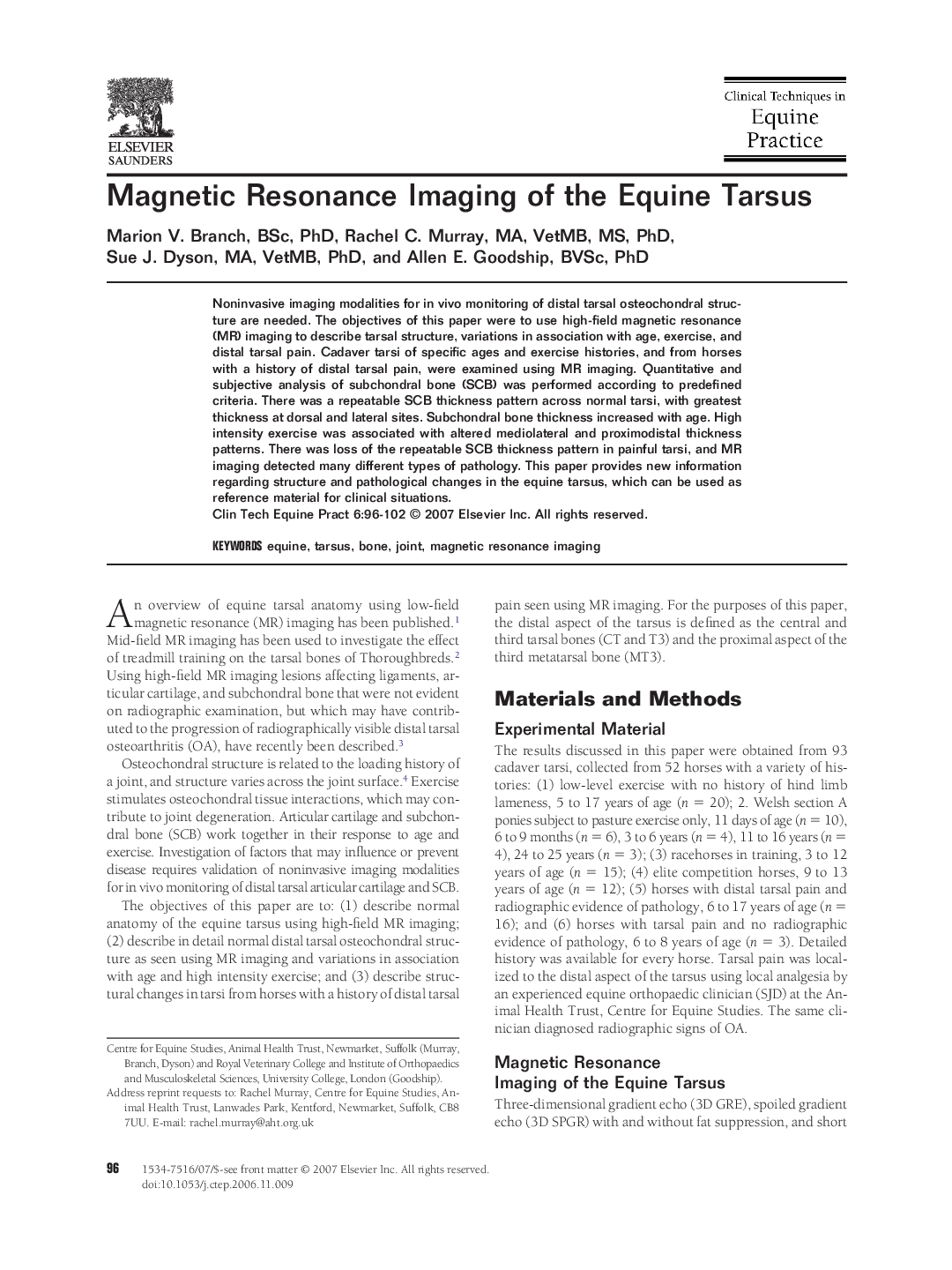| Article ID | Journal | Published Year | Pages | File Type |
|---|---|---|---|---|
| 2393239 | Clinical Techniques in Equine Practice | 2007 | 7 Pages |
Noninvasive imaging modalities for in vivo monitoring of distal tarsal osteochondral structure are needed. The objectives of this paper were to use high-field magnetic resonance (MR) imaging to describe tarsal structure, variations in association with age, exercise, and distal tarsal pain. Cadaver tarsi of specific ages and exercise histories, and from horses with a history of distal tarsal pain, were examined using MR imaging. Quantitative and subjective analysis of subchondral bone (SCB) was performed according to predefined criteria. There was a repeatable SCB thickness pattern across normal tarsi, with greatest thickness at dorsal and lateral sites. Subchondral bone thickness increased with age. High intensity exercise was associated with altered mediolateral and proximodistal thickness patterns. There was loss of the repeatable SCB thickness pattern in painful tarsi, and MR imaging detected many different types of pathology. This paper provides new information regarding structure and pathological changes in the equine tarsus, which can be used as reference material for clinical situations.
